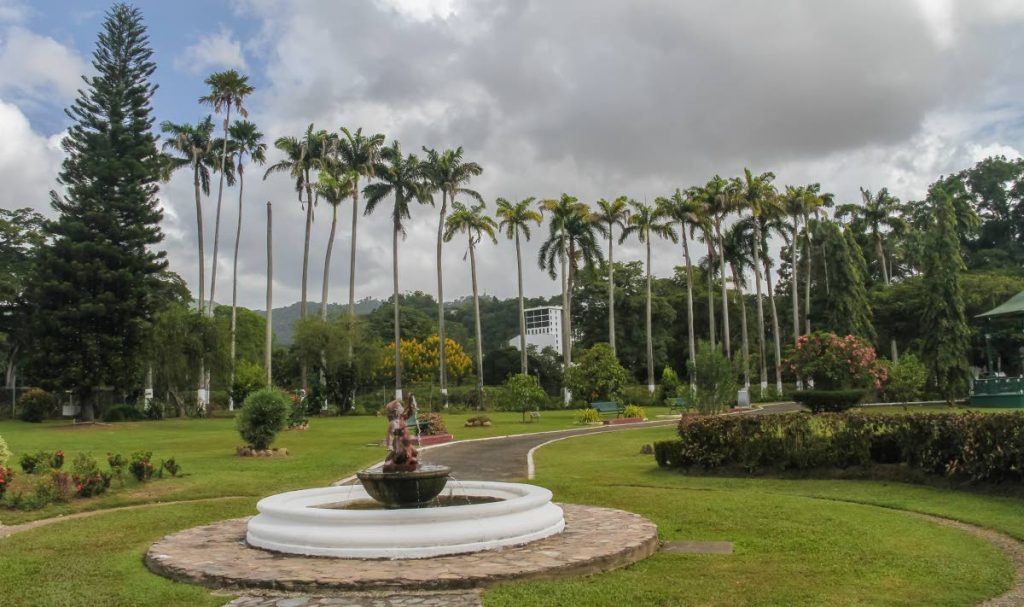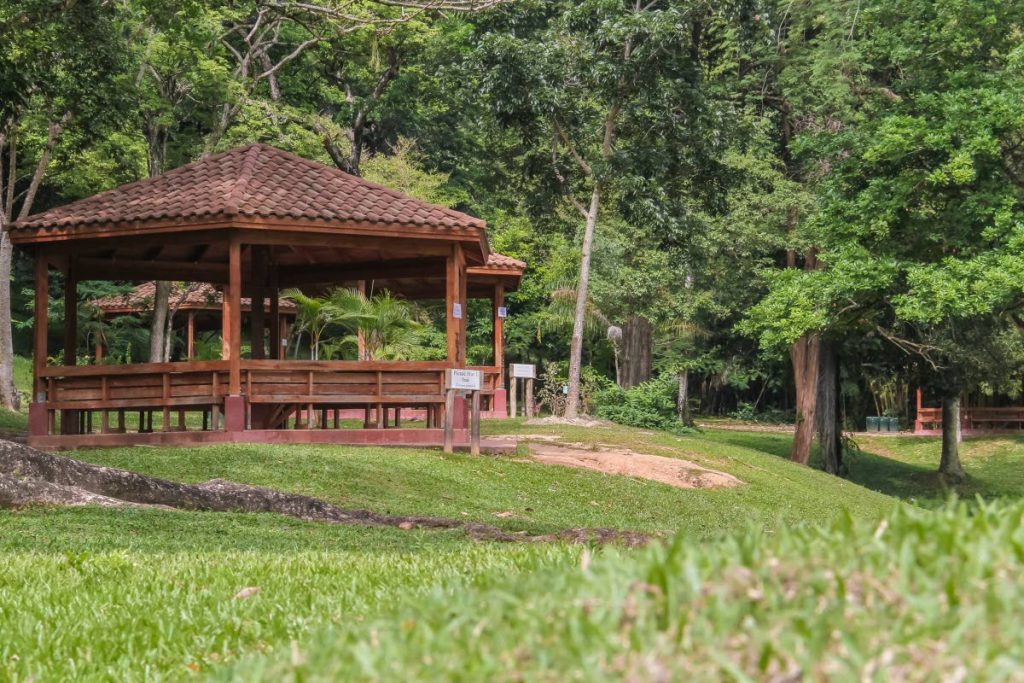The royal gardens

The original purpose of the Royal Botanic Gardens was not for taking wedding pictures and having family outings.
Although the space was open to the public, it was a scientific area for the sole purpose of benefiting the people of Trinidad.
Historian Gerard Besson told Sunday Newsday the Royal Botanic Gardens was created in 1818 by Sir Ralph Woodford, who was the Governor of Trinidad from 1813 to 1829. He was the first civil governor with all his predecessors being military men.
“He was concerned with developing the island. So he brought with him a group of young people, like himself, who had an interest in modern times, modern for those days, and was interested in the overall development of the place.”
One of those men was botanist David Lockhart, who was appointed as first superintendent and was responsible for the layout of the gardens.
With the government’s money, Woodford bought a 200-acre estate from Henri Peschier of St Ann’s for £9,160 which was a substantial amount of money at the time. Those 200 acres included the land that is now the Queen’s Park Savannah and the Botanic Gardens.

He cleared the area of forest leaving some local plants, made the area now known as the Savannah into a public space, and began laying out a botanic garden. Lockhart, under Woodford, started importing rare trees and plants from all over the world including India, Africa, the far east, other tropical areas.
“He (Woodford) was creating a botanical environment. He was creating a park where the people of the town, because it was not yet a city, would be able to enjoy the scenery, the rolling lawns, and would be able to enjoy seeing strange, exotic trees from different parts of the world that would have fruits and flowers–a different kind of environment. From all accounts it was a great success from the very beginning.”
Besson explained that the gardens was a place where rare plants and trees were brought to see if they would thrive and could be propagated in this part of the world for industry and agriculture. They were brought with a purpose–to be cultivated so cuttings could be procured and transferred to the various estates on the island for valuable timber and food.
He said the samaan trees were brought to provide shade and comfortable grazing for cattle so they could produce more milk. In fact, he said there were so many samaan trees in St Clair because the whole area, from around Wildflower Park in St Clair to Tragarete Road, was pasture land called the Government Farm, where many cattle grazed.
Breadfruit in the gardens
The first breadfruit tree in Trinidad was also planted at the gardens. It was brought from an island in the Pacific because poor people needed food and breadfruit was filling and healthy. “Woodford made a lot of advancements. He did a lot of things that really made a very big difference to the overall environment.”
He said over time, the Botanic Gardens was integrated into the work of the Imperial College of Tropical Agriculture (ICTA), the forerunner to the University of the West Indies, St Augustine campus. The ICTA created a herbarium where it kept a record of all the species of the different plants and trees in Trinidad, both local and imported. “The very economy of Trinidad in the days before the exploration of oil was based on agriculture so it was very important to have, in Trinidad, an experimental station like the Botanic Gardens. And it was very important to have a college of agriculture, which became, over time, the university where agriculture would be studied, experimented with, and treated as a science. So the connection between the university and the Botanic Gardens was once a very strong, living connection.”
According to information from the Ministry of Agriculture, Land and Fisheries, after the death of Lockhart in 1845, there were several others who contributed to the uniqueness of the gardens. These included William Purdie from 1846 to 1857, Dr Herman Kruegar, a trained apothecary, and Henry Prestoe from 1864 to 1886.
The rise of tropical agriculture
From 1878 to 1879, the gardens expanded with purchase of St Clair Estate and there was an increased collection of ornamental plants obtained from Kew and other parts of the world. Many new plants and crops of potential economic value were also introduced, distributed and exchanged throughout the world including cocoa, coffee, tea, mango, mangosteen, palms, varieties of sugar, rubber, and more.
During John Hart’s appointment to superintendent from 1888 to 1908 there was a renewed search for alternative cash crops for the colony, including spices, ginger, tobacco, citrus and various types of timber.

The ministry document stated, “In 1897, The Norman Commission defined the role of the Botanic Gardens: The introduction and experimental cultivation of economic plants to secure improved varieties of such plants, and especially of sugar cane. It should comprise a branch for the teaching of tropical agriculture, and should form a centre from which teachers would be sent to give practical lessons in the cultivation of tropical plants and the selection of suitable locations for growing them…In the mean time the Botanical Department in Trinidad should encourage the introduction and growth of the better descriptions of fruit, and give instructions as to the best means of cultivation and packing fruit for export.”
Over the years, however, things changed.
Besson noted that trees that were over 200-years-old were cut down for various reasons, including that some were rotting. However, he said they were not replaced with other exotic trees but with “common” plants like crotons and bougainvillea.
“So the idea of keeping it as a place where you would bring a rare tree from a distant place and plant it has gone. It seems the people who look after it today don’t have those ideas in mind. They just want to keep it as a park rather than a scientific place.”
One of the oldest botanic gardens
Speaking at the official postal stamp launch in commemoration of the bicentennial anniversary of the Royal Botanic Gardens on December 6, Agriculture Minister Clarence Rambharat said we were living in a society where many people lacked foresight and were “not even planning for the next two years, let alone, 200.”
He said, “The Royal Botanic Gardens has a tremendous history but perhaps the most important thing we can do in its 200th year is to reflect on those persons who had the foresight to make an investment into the future. What we enjoy today at the Royal Botanic Gardens is the result of an investment in attitudes and I commend those who have been involved in it and who have created something which we can all enjoy.”
Not only enjoy, but be proud of.
According to the ministry, the Royal Botanic Gardens is one of the oldest botanic gardens in continuous operation in the western hemisphere. It occupies 61.8 acres (25 hectares) and has assortment of over 600 plants–approximately 13 per cent indigenous to Trinidad and 87 per cent from every continent of the world.
In addition to the plants, the gardens, located north of the Queen’s Park Savannah, has a small cemetery, known as God Acre. There, several British government and military officials and their families are buried. The last person to be buried there was Lady Thelma Hochoy, wife of the first Governor General of TT, in 2010. She was buried next to her husband, Sir Solomon Hochoy.
The Botanic Gardens are open to the public daily from 6 am to 6 pm.


Comments
"The royal gardens"